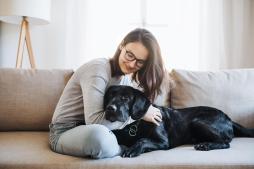Common Mistakes to Avoid When Housebreaking a Puppy

Housebreaking a puppy is an essential part of welcoming a new furry friend into your home. It can be challenging, but with the right approach, you can teach your puppy good habits quickly and effectively. However, many new pet owners make common mistakes that can slow down the process or cause confusion for their puppy. In this article, we’ll explore some of these pitfalls and provide tips that work to help you housebreak your puppy successfully.
Inconsistent Schedule
One of the most frequent mistakes when housebreaking a puppy is not maintaining a consistent schedule. Puppies thrive on routine, so feeding them at the same times each day and taking them outside regularly will help them learn when it’s time to relieve themselves. Establishing regular potty breaks—such as after meals, playtime, and naps—creates predictability that supports successful training.
Insufficient Supervision
Another common issue is failing to supervise your puppy closely enough during the early stages of housebreaking. Puppies are curious and may have accidents if left unattended for too long. Keeping an eye on your puppy or confining them to a safe area like a crate when you cannot watch them helps prevent accidents and reinforces where it’s appropriate to go potty.
Punishing Accidents
Punishing or scolding your puppy for accidents often does more harm than good. Puppies don’t understand punishment in context and may become fearful or confused, which can hinder training progress. Instead, focus on positive reinforcement by praising and rewarding your puppy immediately after they eliminate in the correct spot.
Not Using Positive Reinforcement
Lack of rewards is another mistake many owners make during housebreaking. Consistently rewarding your puppy with treats, praise, or playtime when they go potty outside encourages repetition of good behavior. Positive reinforcement strengthens the bond between you and your pup while making learning enjoyable for both.
Ignoring Signs That Your Puppy Needs to Go
Finally, ignoring signs that indicate your puppy needs to go outside—such as sniffing around or circling—can lead to unnecessary accidents indoors. Learning these cues allows you to promptly take your pup outside before they have an accident inside the house.
Housebreaking a puppy requires patience, consistency, and understanding common pitfalls can improve success rates dramatically. By avoiding inconsistent schedules, supervising adequately, using positive reinforcement instead of punishment, and watching for signals from your pup, you’ll set yourself up for effective training that builds lifelong good habits.
This text was generated using a large language model, and select text has been reviewed and moderated for purposes such as readability.


